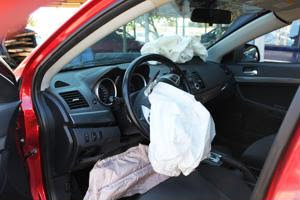Safe Vehicle Operation Training: Make It a Priority

Employers shouldn’t overlook motor vehicle safety – this is a subtly critical part of keeping workers safe.

Vehicle safety is a major workplace concern.
Employees and supervisors alike may reason that workers with driver’s licenses don’t need additional rules or training for the more specialized driving tasks they’ll perform on the job. Falling into this mindset, however, may set workplaces up for preventable accidents.
Along with many other categories of workplace risk, the Occupational Safety and Health Administration offers rules, tips and resources for vehicle use in a professional context. Instituting policies based on these directives, aided by focused training programs, can significantly improve a company’s safety record.
Motor Vehicle Accidents: Common and Damaging
When it comes to fatal workplace accidents, transportation-based incidents are the top problem U.S. companies face. Bureau of Labor Statistics data presented by OSHA demonstrates that in each of the five years from 2012-16, the most recent for which data is available, deaths on the roadways were by far the most prominent cause of workers’ deaths.
Breaking down the data for the over 1,500 worker transportation deaths in 2016, the vast majority of incidents center around motorized land vehicles, everyday cars and trucks. Road deaths of employees reached 1,250, vastly more than the fewer than 250 people who died in aircraft accidents and even fewer who were killed in incidents involving trains or boats. Becoming more focused and deliberate in the use of cars and trucks could significantly mitigate the fatality totals over the next few years.
The National Institute for Occupational Safety and Health, part of the Centers for Disease Control and Prevention, explained how motor vehicle accidents at work don’t just exact a human toll – employers are feeling major budgetary effects as well. Annually, companies lose $25 billion due to crashes, displaying a clear bottom-line case for improving vehicle safety.
 Staying safe on the road is as relevant in the workplace as it is in everyday life.
Staying safe on the road is as relevant in the workplace as it is in everyday life.Instilling Safe Vehicle Operation
It’s not enough to look at the statistics and give employees verbal warnings about safe driving. Whether workers are operating their own cars or using specialized workplace vehicles, they should be governed by clear and established policies.
NIOSH suggests four basic pillars for employers tasked with creating safer motor vehicle operation policies in their workplaces.
1) Ensure supervisors are committed to safety. Leading by example makes others follow along naturally. Managers who don’t take car and truck operation seriously should review the harrowing statistics on road fatalities and monetary damages.
2) Use written policies to set clear expectations. As with any truly effective security program, workers should never have to guess what they are expected to do in safe driving policies. Leaders should make sure there is no room for doubt in the practices employees must follow while on the road.
3) Select vehicles that have safety features. If cars and trucks have many built-in advantages, incidents on the road are less likely to lead to serious injuries or fatalities. When companies buy and operate vulnerable vehicles, they are making the job of road safety harder.
4) Collect and use data to improve the program. Comprehensive security policies are allowed to change over time. When companies put rules in place and then forget about them, they can reap some limited benefits, but true improvements come when leaders are committed to learning from their progress and revising policies for the better.
Driving in the workplace can and should be a structured and carefully managed part of the employee experience, as with any other potentially dangerous activity. Thinking about vehicle operation with a more serious and urgent mindset may be the first step to revamping policies and improving conditions.
Getting drivers in line with a manager’s new approach to workplace motor vehicle use will likely require training. No matter how much experience workers have driving on their own time, investing in courses will pay off.
Focusing on Training
Training courses concerning safe vehicle operation are varied, with some covering universally applicable rules of the road and others delving into deeply specific workplace requirements. The former kind of course is a great refresher for anyone who drives a car. The lesson incorporates topics such as driving defensively, avoiding distractions, navigating potentially dangerous roadway features and inspecting vehicles for safety.
The second type of course focuses on specific vehicle types such as heavy trucks, which are governed by their own unique requirements and demand specialized licenses. Completing a heavy truck safety inspection, keeping a large vehicle on the road in difficult conditions and managing cargo space in a trailer are just a few of the topics handled in specialty courses.
Whether workers are young or old, and no matter how much driving they do in everyday life, there is useful information in vehicle-focused courses. These refreshers can directly address road safety, the top cause of workplace fatalities.
Source